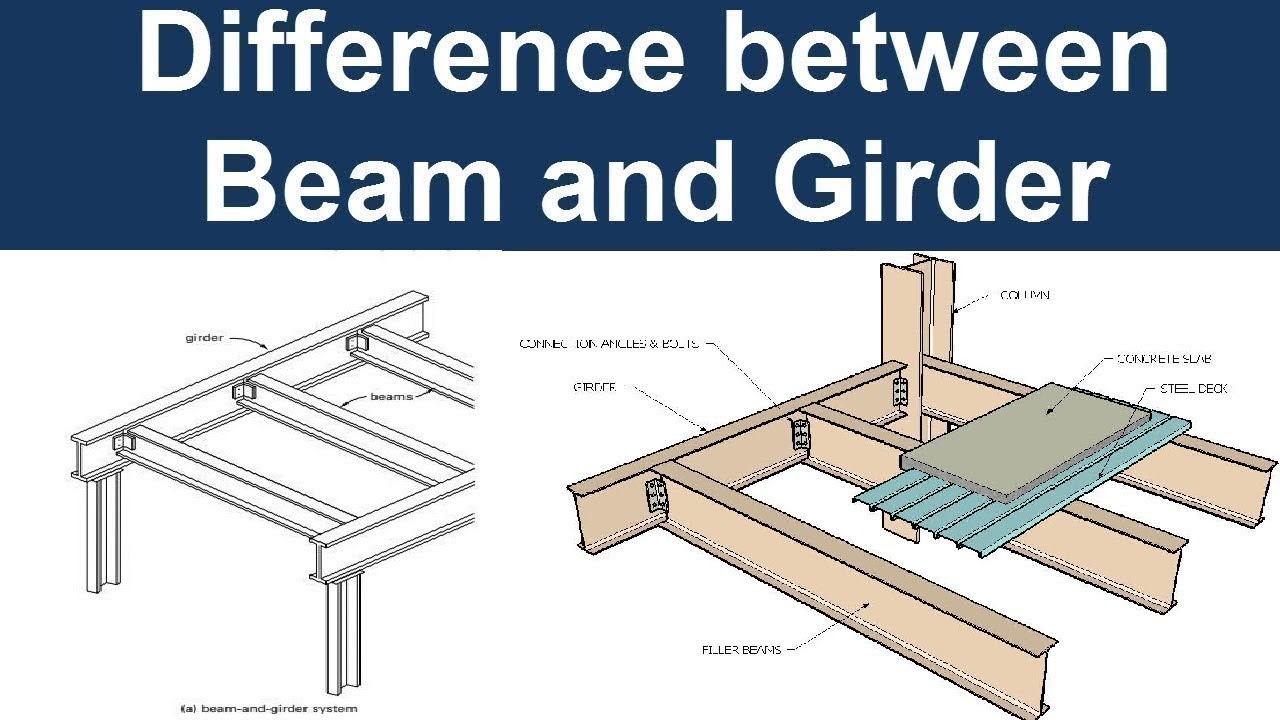Let’s say you’re standing in a house—your house. It feels solid, safe, and sturdy, right? But what you don’t see is the backbone of that safety. Hidden above your head and beneath your feet are powerful structures quietly holding everything up: beams, girders, and joists.
Now, if you’ve ever wondered, “What’s the difference between a beam and a girder?” or “Why do builders use both a beam and a girder system?”—you’re not alone.
These terms get tossed around like interchangeable building blocks. But trust me, there’s a world of difference between a girder beam and a regular beam. And knowing these differences isn’t just for engineers—it matters to anyone building, renovating, or just plain curious about what’s holding up their home.
What Is a Girder Beam, Really?
Let’s start with the basics.
A girder beam is like the main road in a city. All the little side streets (aka beams) feed into it. So when we talk about a girder, we’re talking about the big boss—the one that carries loads from other beams and transfers them down to columns or even the foundation.
So if someone asks, “What is a girder beam?”, the simple answer is:
It’s the big support that other beams sit on.
In the structure world:
- Beams support joists
- Girders support beams
- And columns or walls support girders
That’s the food chain of structural strength!
Girder vs Beam: Why They’re Not the Same
It’s easy to get confused when you hear phrases like beam girder, beam and girder, or even beam to girder connection. But here’s where things get clearer:
- A beam is a horizontal element that holds up the floor or ceiling.
- A girder is a stronger, more robust horizontal element that holds beams.
Think of it this way:
Beams are the arms. Girders are the shoulders.
The arms (beams) can carry things, but they need shoulders (girders) to connect them to the body (structure).
So when comparing girder vs beam, you’re looking at two levels of support. A girder supports beams, and beams support joists.
But Wait… What’s a Joist?
Here’s where things often get messy. People start asking:
- Beam vs Girder vs Joist
- Joist vs Beam vs Girder
- Girder Beam Joist? What?!
Let’s break it down simply:
- Joists are the smaller, closely spaced boards that support your floor or ceiling.
- Beams support joists.
- Girders support beams.
It’s a staircase of strength:
Joist → Beam → Girder
So when you hear joist beam girder, or girder vs beam vs joist, just remember—each one has its job in keeping the structure safe and sound.
Why All the Confusion?
One big reason people mix them up is that beams and girders look similar. They’re both long, horizontal members that hold things up.
Plus, in small homes or sheds, the same piece of wood or steel might act like a beam in one area and a girder in another—depending on what it’s holding.
This is why it’s crucial to understand the beam and girder difference, even if they look the same at first glance.
Steel vs Wood: What Girder Beams Are Made Of
Now, let’s talk materials—because the material can change the name of the game.
Steel Girder Beam
These are strong, durable, and built to handle massive loads. In big buildings, bridges, and warehouses, you’ll usually find a steel beam girder doing the heavy lifting.
Keywords to know:
- Steel I Beam Girder – shaped like an “I” and incredibly strong
- Box Beam Girder – a hollow rectangular or square shape, often used in bridges
Wood Girder Beam
In houses, wood girder beams are more common. They’re used in floor systems and small-scale construction. While not as strong as steel, they’re cheaper and easier to work with.
Some systems combine materials—a beam and girder construction might use wood beams connected to a steel girder, depending on the design.
Beam to Girder Connection: How They All Work Together
One of the most important (but invisible) parts of your home’s strength is the beam to girder connection—how beams are attached to girders. This connection transfers weight safely and helps keep everything from shifting or collapsing.
And on the flip side, you’ve also got the girder to beam connection—when the girder sits atop or beneath the beam based on the structural plan.
These connections are often supported by:
- Girder beam clamps
- Bolts, plates, or hangers
- Custom brackets in a beam and girder system
Everything must be tight, secure, and engineered with safety in mind.
Not Just Homes: Beam and Girder Bridges
While homes usually hide their beams and girders, bridges wear them proudly. Ever driven under a bridge and seen those huge horizontal pieces? Yep, those are girder beams and steel I beam girders holding up tons of weight every day.
This type of beam and girder bridge is built for strength and stability, using massive supports to span long distances.
Why Should You Care?
You might be thinking, “Okay cool, but I’m not building a skyscraper.” True—but even in your home, understanding the difference between girder and beam can help you:
- Ask smart questions during a renovation
- Understand sagging floors or structural cracks
- Know whether to call a contractor or a structural engineer
- Avoid costly mistakes
Because when something goes wrong under the floor or above the ceiling, knowing whether it’s a girder beam issue or a beam problem makes all the difference.
Here’s everything wrapped up with a bow:
| Part | What It Does | Where It Goes |
|---|---|---|
| Joist | Holds up your floorboards or ceiling drywall | Spaced close together |
| Beam | Holds up joists | Spans mid-size gaps |
| Girder | Holds up beams | Spans longest distances, rests on columns |
So whether you’re looking at a beam and girder connection, comparing beam vs joist vs girder, or trying to understand a girder beam joist layout—just remember the hierarchy.
And if you’ve ever heard terms like beam girder, beam vs girder, or girder and beam, now you know they’re not just fancy construction words. They’re part of the hidden strength that holds our world together.
Final Thought: Strong Starts Are Built from the Ground Up
You might not see your home’s girder beams, but they’re there—working hard so you don’t have to worry. It’s kind of beautiful, really. These unsung heroes quietly bear the weight of your life’s moments—birthday parties, late-night laughs, Sunday dinners.
So the next time you step into a room, remember: somewhere beneath your feet or above your head, a beam and girder system is holding you up.
And now, you truly know the difference between a beam and a girder—and that, my friend, is the start of building smarter.




